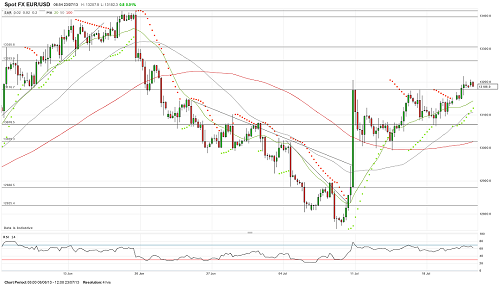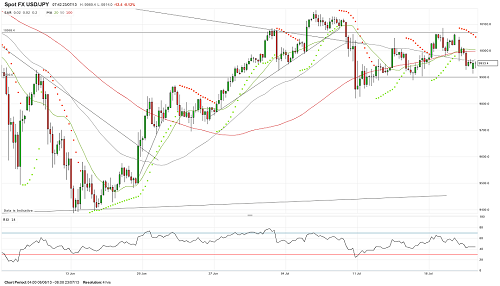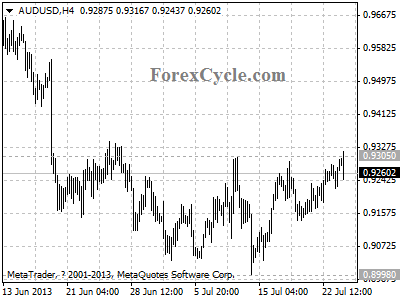By MoneyMorning.com.au
Gold has made it to the business news pages again.
Only this time it’s good news.
Overnight the gold price climbed above USD$1,347 per ounce…a gain of more than 10% in a matter of days.
That’s still a long way from the USD$1,900 peak in 2011. But it’s better than the sub-USD$1,200 level it slumped to last month.
This quick move shows why we tell you to stop thinking about it so much and just buy it. But is it fair to say that after a 10% move? Surely it’s much better to wait for it to fall again and then buy gold…
This is one of the biggest dilemmas for investors.
Do you go with the trend or do you assume the short-term price rise is just that – short term, and that the price will soon come back down to a fair level?
We’re quite certain that figuring this out has cost investors more money in missed investment opportunities and actual losses than anything else.
So, what do you do?
Are You an Investor or a Trader?
This is really important. If you can get this right (or even half right) you’ll save yourself a lot of stress as you build your investment portfolio.
The first thing to work out is whether you’re an investor or a share trader. We say this because sometimes it’s easy to forget. A fast moving market can catch out even the most disciplined of Warren Buffett wannabe investors, and make them do things they shouldn’t.
If you’re not sure, the best way to think of it is like this. If you’re a trader you probably don’t much care what shares you buy and sell. The inner workings of a company and what it does don’t interest you.
You look at a chart, work out the odds of a stock price rising or falling and then place the trade accordingly. Regardless of whether it’s a good or a bad trade, odds are you’re out of the position in a week.
On the other hand, investors usually do care which shares they buy and sell. Investors tend to look into the background of a company, study the financials, gauge the market’s likely reaction to good or bad news, and then buy the shares.
Odds are the investor will still own the stock three months from now, and most probably in six or 12 months’ time. The really committed investor will hold the stock for many years.
And yet, from time to time, it’s as though some investors and share traders switch bodies. An investor who bought a stock for the long-term (maybe it pays a dividend) is spooked by a 5% or 10% fall just after they bought it and so they sell.
Conversely, sometimes a quick move against them will equally spook a trader. But rather than doing what they normally do – sell – they decide to hang on to the stock because it’s ‘now a long-term investment’.
This is why it’s important to set boundaries for an investment or trade at the beginning. And that’s another important point; you don’t have to be one or the other. You can set aside part of your portfolio for long-term investments, and part of it for shorter-term punts or trades.
You just have to remember the reason for buying each stock in the first place.
Beware of ‘Emotional Analysis’ When Investing
If you bought a stock for fundamental reasons, you should keep hold of it for fundamental reasons – and not sell just because of a short-term price move.
If you’re a fundamental investor and you sell an investment just after you’ve bought it that tells us you probably didn’t really buy it for fundamental reasons.
Most likely you quickly looked at the chart, checked out the dividend yield and PE ratio and thought, ‘That looks cheap, I’ll buy that.’
Come on, admit it, we’re sure you’ve done that at least once in your investing life. We know we have. We call it ‘emotional analysis’, and it rarely works out well.
In fact, when you invest that way you’ve got the worst of both worlds. It’s slap-dash fundamental analysis. And it’s slapdash technical analysis. It’s no surprise no-one makes a living or a fortune from stocks that way.
So, in short, if you want to make anything out of the stock market, you can’t do it in half measures. You’ve got to put the time in regardless of whether you prefer fundamental or technical analysis.
But what about the asset we mentioned at the top of this email – gold?
Right. Everything we’ve said up to this point, in the case of gold investing (and only gold investing), throw it away.
Gold is a completely different story. It’s an asset you should buy at almost any time…unless you see exceptionally better value elsewhere. We wrote last week that we saw the current market as a 50/50 choice between stocks and gold.
That hasn’t changed. We see gold as the ultimate long-term investment and long-term insurance policy. That’s why gold is the only investment where technical or fundamental analysis doesn’t apply.
Does a 10% Move Really Matter When You Invest in Gold?
We don’t care if the price rises or falls in the short-term because we didn’t buy it for the short-term. We bought gold before it hit USD$1,900 and we’ve bought gold after it hit USD$1,900.
We’re yet to sell even a single fraction of an ounce…and it’ll be a long time (if ever) before selling even crosses our mind.
So if you’re waiting for gold to fall before you buy it, ask for what reason you’re buying gold. If it’s to make a 10% or 20% gain, forget it. There are much better ways to make those returns – the stock market.
But if you’re buying gold for the long-term (30, 40 or 50 years), then will a $100 difference really make a difference over that timeframe? If you think $100 will make a difference, then you aren’t a serious long-term gold buyer.
Remember, we only apply this attitude to gold. It’s different with stocks because you’re dealing with businesses and revenues and profits that can change from month to month and year to year.
But gold is just gold. It was gold five years ago and it’s gold today. If you’re serious about buying gold for the long-term then forget about the short-term price moves and just buy an ounce or two at regular intervals.
As we’ve long said, when it comes to gold investing, don’t make it any more complicated than necessary.
Cheers,
Kris+
Join Money Morning on Google+
From the Port Phillip Publishing Library
Special Report: The Sixth Revolution
Daily Reckoning: What Three Grumpy Old Men Think of an Australian Recession
Money Morning: The Hunt for the Next Tech Stock Superstars
Pursuit of Happiness: The Exciting Move From Globalisation to Localisation

 There is a simple fact in the stock market: restaurant stocks can make good money.
There is a simple fact in the stock market: restaurant stocks can make good money.





